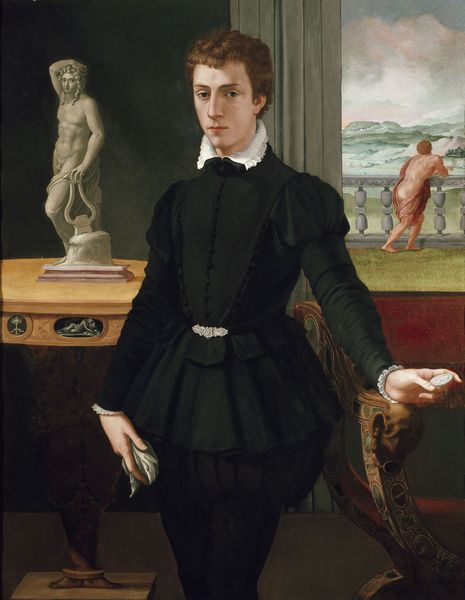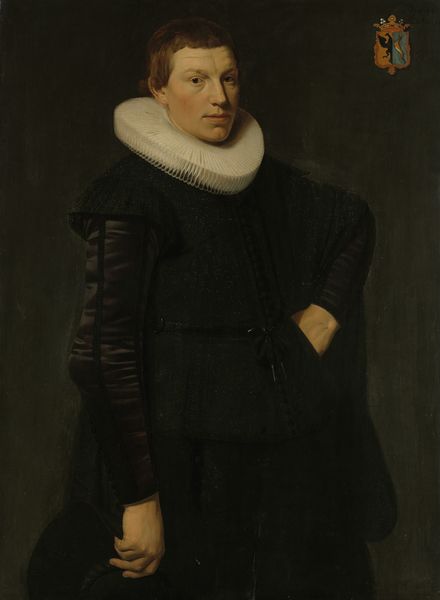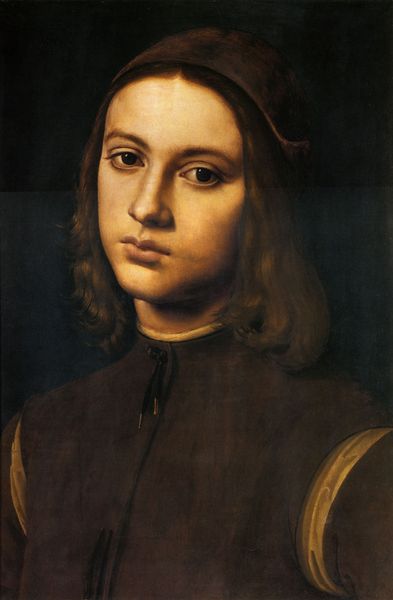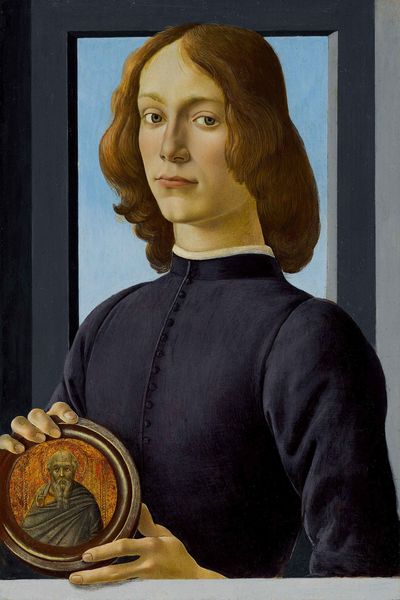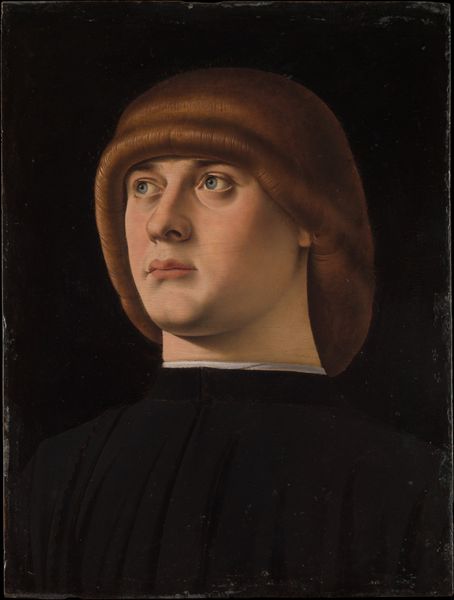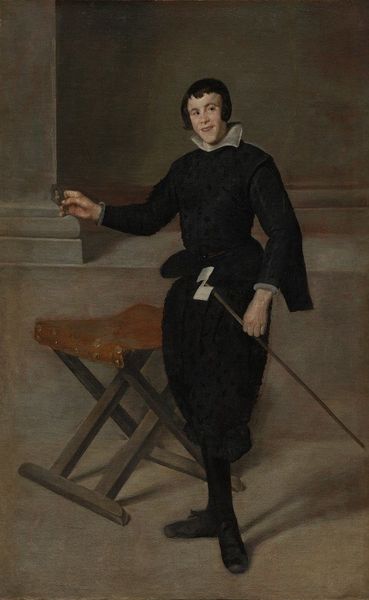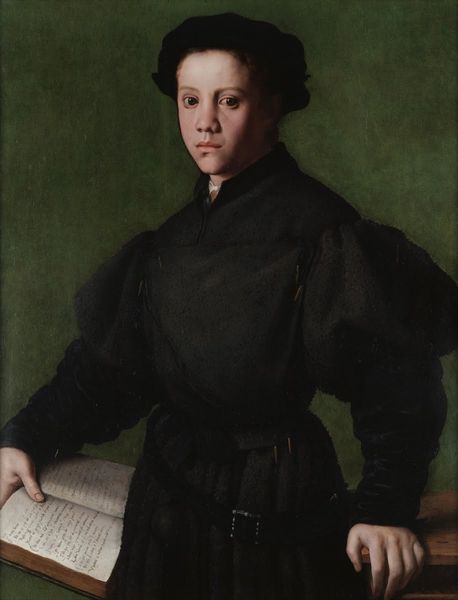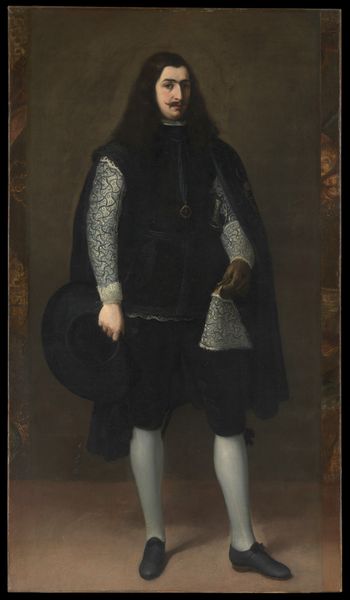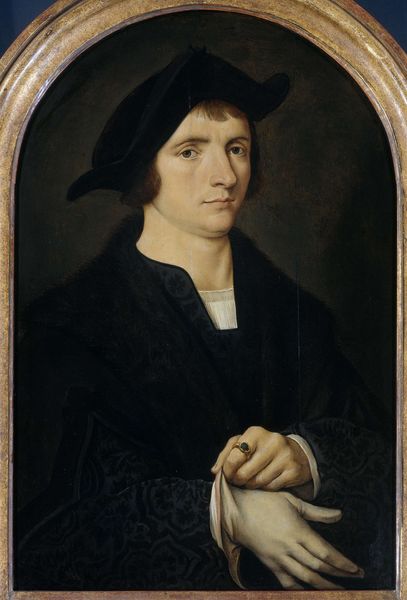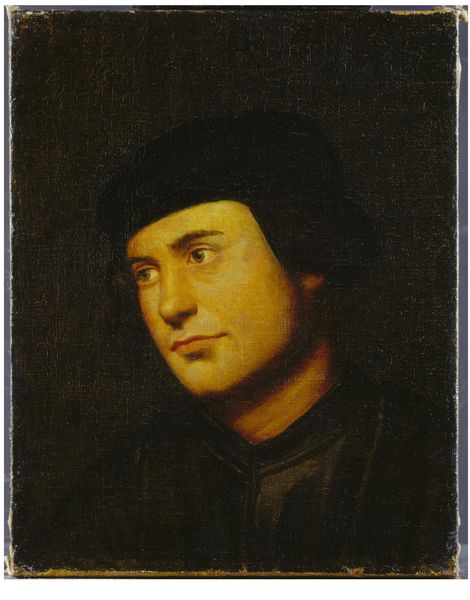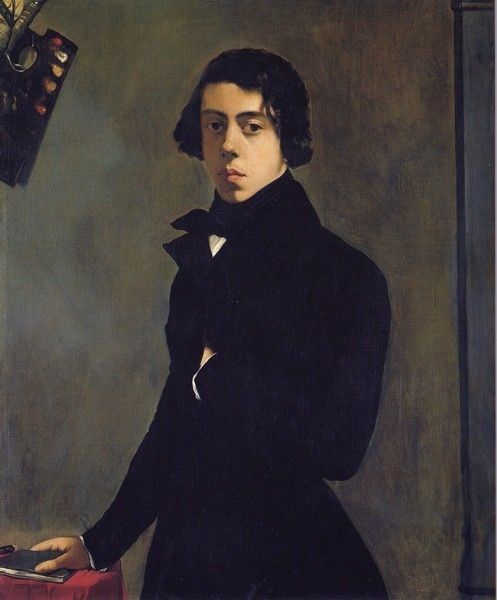
oil-paint
#
portrait
#
figurative
#
character portrait
#
portrait image
#
portrait
#
oil-paint
#
portrait reference
#
portrait head and shoulder
#
romanticism
#
portrait drawing
#
facial portrait
#
academic-art
#
fine art portrait
#
realism
#
celebrity portrait
#
digital portrait
Copyright: Public Domain: Artvee
Henri Lehmann's portrait captures Franz Liszt, enveloped in darkness, his arms crossed, drawing our gaze. This gesture, laden with artistic heritage, reminds us of the classical contrapposto, a stance of self-assuredness echoed across centuries, from ancient statues to Renaissance portraits. We recognize this motif, yet its intensity here evokes a different sensation. The darkness consumes Liszt's figure, revealing only his face and hands, heightening the image's psychological tension. The hands, often symbols of capability, are crossed, suggesting a moment of introspection or creative contemplation, a powerful engagement with the self. This pose, reflecting an inner emotional landscape, is not merely a physical stance but an active psychological revelation. It brings to mind the shifting meanings of such gestures throughout history. Observe how a single pose can evolve, carrying collective memories and subconscious expressions. From rulers projecting power to artists conveying vulnerability, these motifs remind us of the cyclical nature of art.
Comments
No comments
Be the first to comment and join the conversation on the ultimate creative platform.
